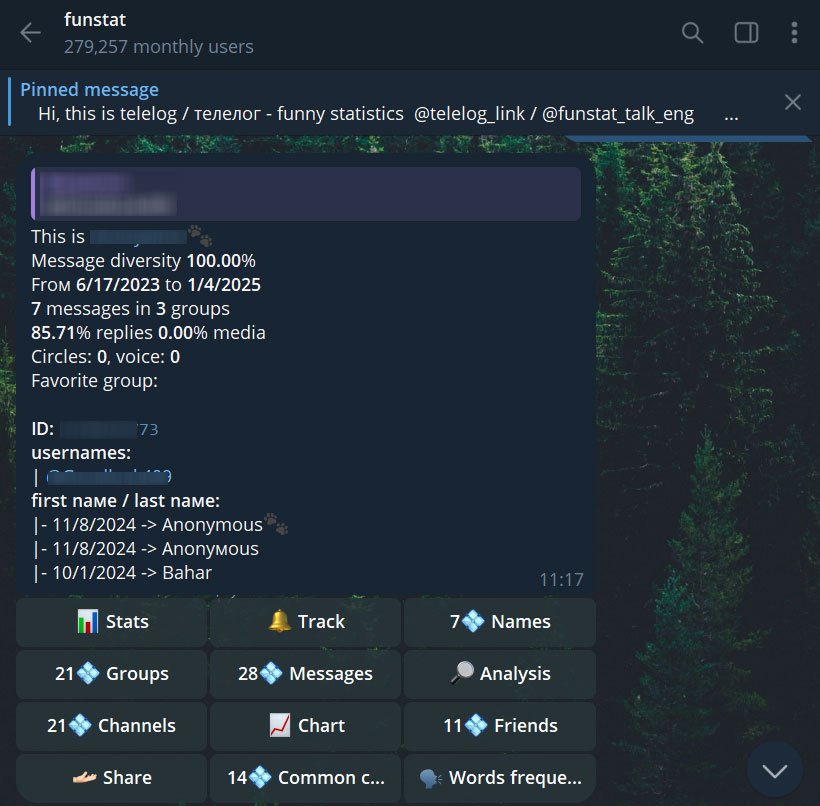In the ever-expanding digital landscape, Telegram has emerged as a significant platform for communication, hosting a vast array of public groups and channels. Within these public spaces, a wealth of information is exchanged daily.
For researchers, analysts, and investigators engaged in Open-Source Intelligence (OSINT), tools that can effectively navigate and analyze this public data are invaluable. One such tool that has garnered attention is the Telegram bot @SearchLogsRobot, developed by the Telelog project.
What is @SearchLogsRobot and How Does It Work?
At its core, @SearchLogsRobot is an automated tool designed to index and search public messages within large Telegram groups. It’s crucial to understand its operational boundaries: the bot explicitly does not access private chats, closed groups, or any form of personal user data beyond what is publicly shared. Its primary function, as outlined by its creators at Telelog (whose legal framework can be reviewed at https://teletype.in/@telelog/legal_rus), is to catalog messages voluntarily posted in open, high-volume Telegram communities.
The utility of @SearchLogsRobot lies in its ability to sift through the noise of sprawling public discussions and pinpoint specific information related to user activity or content. Users can interact with the bot by providing a Telegram user ID (e.g., @example). The bot then queries its database of indexed public messages to provide insights based on that ID’s public interactions.
Key Capabilities and OSINT Applications:
The functionalities offered by @SearchLogsRobot cater directly to several OSINT objectives:
- Mapping a User’s Public Footprint:
- Identifying Active Groups: The bot can reveal a list of public groups where the specified user ID has posted messages. This helps in understanding the user’s public affiliations and areas of interest.
- Retrieving Public Messages: Investigators can extract the actual content of messages posted by the target ID within these public forums. This can be crucial for understanding a user’s public statements, opinions, or shared information.
- Analyzing Content and Connections:
- Forwarded Message Tracking: In some instances, the bot may be able to identify the original source channels from which a user has forwarded messages into public groups. This can help trace the dissemination pathways of information or propaganda.
- Trend and Keyword Analysis: While not its primary individual search function, the underlying data collected by such a system can be aggregated (by the Telelog project, for instance) to identify trending topics, frequently used keywords, or emerging narratives within the monitored public chat ecosystem. This provides a broader understanding of public discourse on specific themes.
Practical OSINT Use Cases:
The applications for a tool like @SearchLogsRobot in an OSINT context are diverse:
- Investigative Journalism: Journalists can use it to verify information, track the public statements of individuals of interest, or understand the spread of narratives related to current events.
- Brand Monitoring and Market Research: Companies could (ethically and within public data constraints) monitor public discussions related to their brand, competitors, or industry trends.
- Security Research: Analysts might track the public activities of groups or individuals involved in spreading disinformation or coordinating potentially harmful activities (always within the bounds of public information).
- Academic Research: Social scientists and researchers can leverage such tools to study online communities, communication patterns, and the dissemination of ideas in public digital spaces.
How to Use @SearchLogsRobot:
The interaction with the bot is designed to be straightforward. Users typically initiate a chat with @SearchLogsRobot on Telegram (accessible via https://t.me/SearchLogsRobot). Once engaged, they can input the target Telegram user ID (e.g., @username). The bot will then process the request and return the relevant public messages and group participations it has indexed for that ID.

Important Considerations and Ethical Boundaries:
While @SearchLogsRobot provides a powerful lens into public Telegram conversations, it’s essential to underscore its limitations and the ethical considerations surrounding its use:
- Public Data Only: It cannot access, and makes no claim to access, private messages, content within closed/private groups, or any other non-public user data. The information retrieved is solely what individuals have chosen to share in open forums.
- Scope of Indexing: The bot’s effectiveness depends on the breadth and depth of the public groups it actively monitors and indexes. It may not cover every public group on Telegram.
- Data Volatility: Messages can be deleted, and users can change their IDs, which might affect the completeness or current accuracy of the retrieved data over time.
- Ethical Use: Like any OSINT tool, the information gathered should be used responsibly and ethically, respecting privacy to the extent that even public data implies, and adhering to relevant legal frameworks. The purpose is intelligence gathering from open sources, not intrusive surveillance.
Conclusion
Tools like @SearchLogsRobot represent a growing category of resources available for OSINT practitioners looking to make sense of the vast amounts of data generated on platforms like Telegram. By focusing exclusively on publicly available messages, it offers a valuable, non-intrusive way to analyze public user activity, track information flow, and understand trends within large online communities. While users must be aware of its operational scope and employ it ethically, @SearchLogsRobot stands out as a noteworthy utility for anyone needing to navigate and extract insights from the public side of the Telegram ecosystem.













